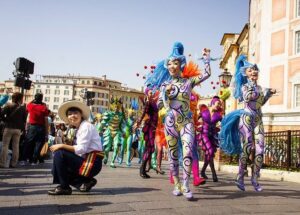What is localization?
A lot of people nowadays can’t tell the difference between translation and localization. It’s an understatement to say that those two things are not one and the same. Translation means converting your content from the source language into the target language while respecting the grammar rules and syntax. In contrast to that, localization is about more than rewriting the text into a different language. It adapts your message to local audiences. If we’re talking about localizing music content, the whole process becomes even more difficult.
What are the biggest problems song translators meet?
Those who describe music as a universal language are both partially correct and partially incorrect, as music generally consists of an instrumental component and a verbal component. This verbal component usually can’t cross the linguistic borders as easily as the instrumental one can. A translator must try to translate the song in all its aspects, rather than merely translating the lyrics. Though it’s regrettable that the verbal component of songs cannot cross these borders as easily as the instrumentals can, it’s not irremediable – songs can, in fact, be translated. Although finding the right words in the target language and building a wholesome meaning to convey to the target audience is a pretty hard task, there’s no specific protocol for translators translating lyrics. As opposed to translators focusing on legal documents, the translators of songs are given ‘a confusing freedom of practice’.
How does Disney do it?
 When we speak about Disney songs, there’s surely a song in our mother tongues that pops up in each of our heads. There is definitely some kind of magic that Disney does to make their musicals so appealing to both kids and adults, across different cultures and in different languages.
When we speak about Disney songs, there’s surely a song in our mother tongues that pops up in each of our heads. There is definitely some kind of magic that Disney does to make their musicals so appealing to both kids and adults, across different cultures and in different languages.
As you can easily see, the company follows some very simple rules when translating and adapting their content for worldwide audiences. Disney’s translations help the audience understand the plot, as well as the characters’ predicaments and emotions. They blend with the music and the production while also managing to remain unobtrusive.
Localization in Disney’s songs is tricky because, in opposition to the rule, the words in the songs are more meaningful that the instrumental. Their songs often take a narrative form of a dialogue or a story being told, which makes them crucial for plot development.
For example, the phrase “a whole new world, a new fantastic point of view” is localized to:
- “新的世界,奇妙的新视角” in Chinese, which means “a new world, a wonderful new perspective”;
- “大空 雲は美しく” in Japanese, which means “sky is large, cloud is beautiful”;
- “Một thế giới mới đang chờ đón” in Vietnamese , which means “a whole new world ahead”;
- “โลกใหม่สวยงาม ตื่นตาเร้าใจกว่าที่เคยมอง” in Thai, which means “a new beautiful world, it’s more dazzling and exciting than it used to be”.
Disney’s worldwide success
Released in 1992, “A Whole New World” from Aladdin ranks internationally as the 6th best Disney song. When the movie was first released in 1992, it was adapted into 22 versions worldwide, in a total of 20 different languages. Over the years, this number has increased to 40 official versions, and some unofficial versions have been added by local TV stations and studios in their local languages. This song is a perfect example of an original Disney piece, firmly embedded in the heads of a couple of generations. It’s loved by so many people worldwide – the song brings up warm childhood memories in both my Russian and my Thai friends. My sister and I also sing its Bulgarian version from time to time.
Other titles that will most probably bring a smile to your face are “Reflection” and “I’ll make a man out of you” from Mulan, “Can you feel the love tonight” from The Lion King, “Beauty and the Beast” from Beauty and the Beast and the more recent “Let it go” from Frozen.
After all of the mentioned above, the answer to the question “To what does Disney owes its international success?” is easy – localization. Disney’s experts managed to retell their magical stories to viewers all around the globe, and in such a way that they stayed in their consciences and hearts. As far as we can tell, they strive to continue employing the same strategy going into the future.